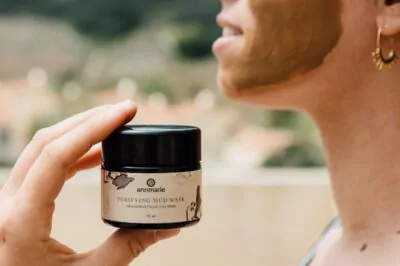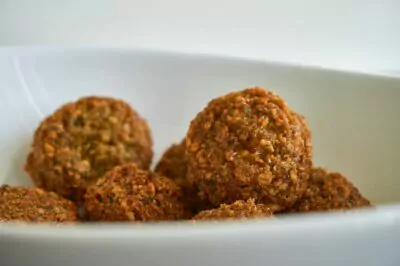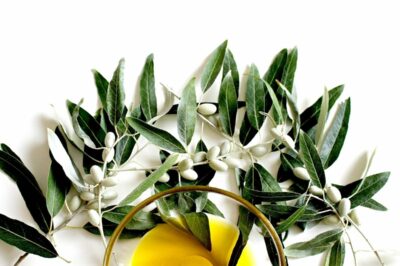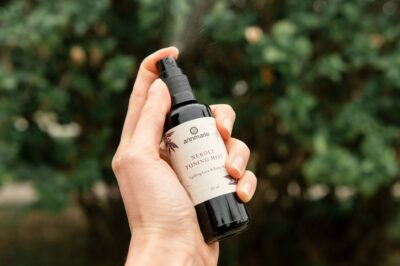Why must the holidays repeatedly test our willpower? Celebration inevitably coincides with overindulgence. You know that feeling—you can’t even remember what it’s like to be hungry, yet you keep finding dessert in your mouth.
Maybe you can normally resist cake, but festive, red-white-and-blue-cake? Doubtful. Perhaps you tend to avoid cheesecake, but then someone goes and makes it bite sized, i.e., irresistible. I would never suggest that you celebrate the independence of our country by munching on carrot sticks all day. That’s not a party. But a holiday isn’t a day to take a break from caring about your health.
The internet is full of healthy 4th of July recipes, and we’re not talking low-calorie, low-fat, or low-anything. It’s more about nutrient-packed, quality ingredients. We sorted through some classic 4th of July food that often has hidden additives or little nutritional value. All it takes is a little alteration to make these recipes healthy enough to celebrate! This year, bring something to the party that will leave your friends and family feeling nourished instead of nauseated.
1. Potato Salad
What’s bad: The main culprit in most potato salads is, of course, the mayonnaise. Mayo brings a lot of fat and calories, but not so much in the nutrient department. We’re not about counting calories, but a single tablespoon of mayonnaise can have 90 calories, nine grams of fat, and 90 mg of sodium. You’ll also find that the oils used in mayo are most often from a genetically engineered crop, like soybean oil or canola oil. Yep, GMOs are in there, too.
Many potato salads also include bacon, and unless you choose your bacon carefully, it will likely contain sodium nitrate. Highly carcinogenic, sodium nitrate was almost banned by the USDA in the 1970’s. Food manufacturers fought back, claiming they had no other way of preserving their meats. The main function of this harmful additive is to keep the meat looking pink long after it’s fresh. If you want to put bacon in your potato salad, pay attention to the label!
The alternative: First off, we’re going to get colorful with our potatoes. In general, more colors means more nutrients, as well as more fun. Next, we’re going to keep the peels on, because we know they have good stuff in there for us! The third step is adding veggies. The potatoes are going to have to share the spotlight with some other players.
This recipe comes from Myra Goodman, a chef who designs recipes with the environment in mind. Her book, Earthbound Cook, has an array of main dishes, desserts, bread recipes, and more, plus great information on how to eat sustainably. For a potato salad that makes the standard recipe look regurgitated, try her Three Color Potato Salad.
If mayonnaise is important in your potato salad dreams, look for versions that use olive oil instead, or just swap out the mayo for hummus like in this recipe for Easy Peasy Potato Salad on Kris Carr’s website.
2. Condiments
What’s bad: Condiments can seem like they don’t even count, but as you gleefully slather them on, you might be unintentionally welcoming harmful additives to your fiesta. Most ketchups contain (genetically engineered) high fructose corn syrup, the notorious sweetener that has been shown to raise your LDL cholesterol.
We mentioned earlier a few downsides of mayonnaise—high calories and GMOs—but let’s also remember that there are eggs in there, and who knows where those eggs are coming from. The majority of eggs in the U.S.—95% to be exact—are still coming from caged hens in factory farms. The Huffington Post even says The Cruelest of All Factory Farm Products are Eggs From Caged Hens. If all of this weren’t enough, because condiments are meant to hang out in your fridge for a long time, they generally contain preservatives and few nutrients.
The alternative: If you love relish on top of your hot dog, opt for something truly fermented, instead of the vinegar-soaked wannabes. This will add that tang to your meat, plus the probiotic goodness of fermented foods.
Mustard isn’t the worst condiment, but store-bought versions with a long shelf life cheat you out of the healthy properties. Mustard seeds actually contain a good amount of iron and calcium, and even more selenium. Making your own mustard and eating it fresh allows you to cash in on these health-boosting compounds! If you’re feeling ambitious and aiming to impress (or just aiming to eat really delicious mustard), try Alton Brown’s recipe for the Best Mustard Ever. As far as ketchup, opt for organic versions without high fructose corn syrup, or try using sun-dried tomatoes on a burger instead.
3. Hamburgers
What’s bad: Now, I don’t want to speak out against one of the most classic of classic 4th of July foods, but it’s important to know what’s in your meat besides… meat. If you don’t choose carefully, your beef might be from a cow treated with hormones and antibiotics. You then ingest these “extras” when you eat it. Further, most livestock produced conventionally are not fed their natural diets, resulting in an unhealthy cow on your plate. Make sure to check your labels and buy organic!
The alternative: Of course, going veggie is an alternative with a lower environmental impact. As you might imagine, cows drink a lot of water and consume a lot of feed (which requires water to grow, among other resources). The process of raising a cow is thus very water intensive. If environmental impact is your concern, finding a veggie burger you enjoy is the best alternative. Black beans, portabella mushrooms, quinoa, potatoes…the options are endless! Try Kris Carr’s Black Bean and Roasted Sweet Potato Burger, a recipe featured in her inspiring cookbook Crazy Sexy Kitchen.
If forgoing meat is not an attractive option for you this year, try branching out. In her book Earthbound Cook, Myra Goodman recommends bison as a lean and more sustainable meat choice. Bison has less fat per gram, plus more iron, protein, and minerals than conventional beef. Most ranchers comply with the National Bison Association resolution and refrain from using growth hormones, steroids, and preventative antibiotics. Also, most bison graze in pastures, enjoying their natural diet of grass, resulting in healthier animals.
4. Hamburger Buns
What’s bad: The issue with white-bread hot dog and hamburger buns is that they don’t really bring anything to the table, nutritionally. Further, for a lot of people, gluten can upset their stomachs—pretty much a barbeque-ruiner. What these hamburger handles do bring to the table is often not great. Many breads have high fructose corn syrup, which we already decided to avoid. Potassium bromate is sometimes added to increase volume. This ingredient causes cancer in animals and isn’t the best for humans, either.
The alternative: The website Against All Grain has a plethora of amazing paleo recipes, including this one for Grain-Free Hamburger Buns. Danielle Walker has an amazing story of how she transformed her health by eliminating grains (and other things) from her diet. She swears that these buns will stay together no matter how grizzly of a patty you put between them. Imagine the look on gluten-free Fran’s face when she shows up to your shindig, having already mentally prepared for a bunless burger experience. Light up her eyes with your grainless surprise! Anyway, try out these buns.
5. Dessert
What’s bad: Refined flour used in most baked goods is not a nourishing ingredient. The process of refining strips away the nutrients, and though some flours are enriched, you still miss out on the fiber. Whole wheat flour has more fiber but is uncommon in sweets. Texture is certainly important, so if you avoid whole wheat flour to keep your baked goods fluffy, choose a white flour that is unbleached!
Researchers at Princeton University studied the effect of sugar on the brain and had some interesting finds. It turns out that rats that binged on sugar and were then cut off experienced withdrawal symptoms like anxiety and teeth chattering. Sugar triggers the production of opioids, chemicals that resemble morphine and have the side effects of sedation, respiratory depression, constipation, and a strong sense of euphoria. Of course, holidays are not complete without dessert, and dessert is not complete without sugar. So we did the unfathomable: we found a brownie recipe that is simultaneously decadent and nutrient-rich.
The alternative: Vegan Gluten Free Peanut Butter Swirl Brownies from Minimalist Baker. The trick here? Black beans replace the flour. Since discovering this recipe, I have made these for anyone and everyone I know, with stunned faces each time I reveal the magical beans. More good stuff in this recipe: coconut oil, flax “eggs,” and high quality cocoa powder. The quarter-cup of sugar and quarter-cup of maple syrup make it dessert, but on the less sweet end of things. Plus, balancing out the sugar with fiber, protein, and fat makes this treat a practically complete meal! Maple syrup also provides trace minerals that refined sugar lacks. If flax is nowhere to be seen in your pantry, I’ve used eggs in this recipe with great results.
This year, commit to making 4th of July a day free of guilt and gastrointestinal anguish! It’s a day of celebrating our freedom, and choosing what we eat is one of the most important freedoms we have. It can be tempting to shower your company with sugary treats devoid of nutrition and cheesy things dipped in cheese.
Crowd pleasers, right? But you can dish out some classic 4th of July food without easing up on your food ethics. If you love eating healthy, share some nourishing dishes with your loved ones. Give them a little fiber with their sweetness and resist serving a salad that is actually more mayonnaise than vegetable. (Salads don’t like it when you offend them this way.)
What are your healthy 4th of July recipes? We’d love to know!
by Hope Freije
Sources:
http://www.livestrong.com/article/440204-how-unhealthy-is-mayonnaise/
http://foodmatters.tv/articles-1/top-10-food-additives-to-avoid
http://www.princeton.edu/pr/news/02/q2/0620-hoebel.htm
Paleo Sweeteners: 3 Alternatives to Toxic Sugar and High Fructose Syrups
http://www.ncbi.nlm.nih.gov/pubmed/21849529
http://nutritiondata.self.com/facts/spices-and-herbs/194/2








Hi 🙂 thank you very much for the very insightful information , for all the care and love you put in your web site and for your amazing products ( rather difficult to find and expensive in Europe unfortunatelly …;-(:-)
however, suggesting a mustard recipe made using a microwave to Chef Mango is a true sacrilege LOL !!!
not only it is a great big huge attack to your health but in France, where mustard is almost a religion, it is totally unheard of !!!
Here is simple and fab recipe
use mustard grains,( to obtain a visually more attractive mustard combine half brown mustard and half light brown) grind by hand preferably, then add lemon juice some chopped fresh herbs of your choice ( fennel, basil, oregano ..anything will do) a little bit of crushed garlic, himalaya salt some warm water & olive oil.That’s it !
let sit for a couple of weeks ,and you will trully obtain the best mustard ever …. 🙂
Chef Mango
Hello there, chef! Thanks for reading this article. 🙂
Your recipe sounds delicious, thank you for sharing!
And just so you know, we do have a distributor in France. Here is that information:
Monaturel SARL
Laurent Gubry
7 place Salvador Allende
94 000 Creteil
[email protected]
http://www.monaturel.com
Wonderful thank you for the great info !
This “all American food” is really not good for us and we will not eat it.
Have a blessed 4th ~